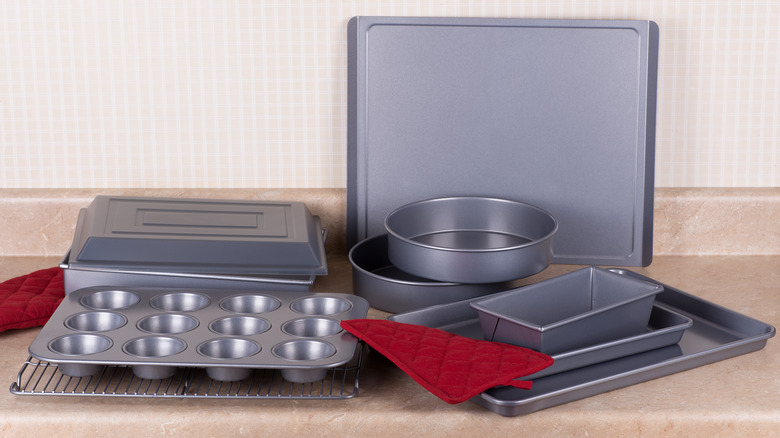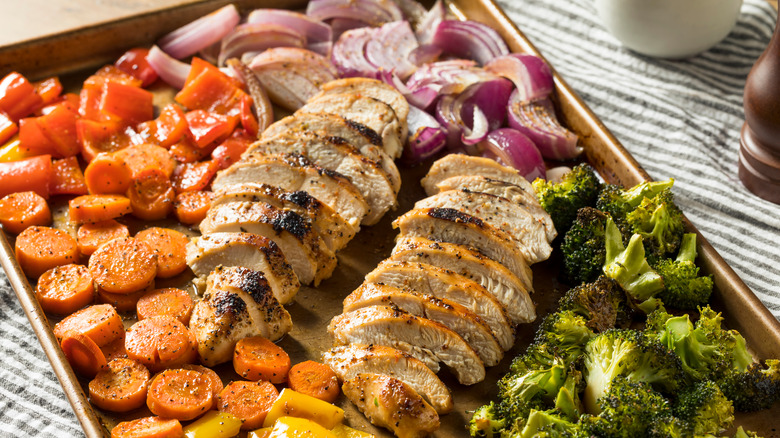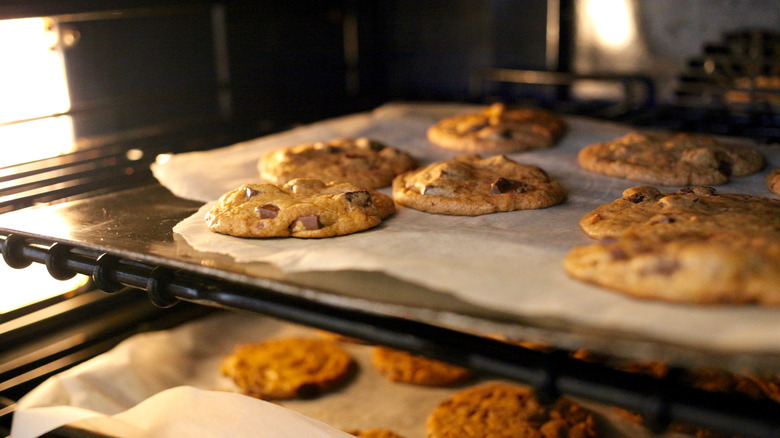Are Baking Pans And Cookie Sheets Interchangeable?
When you read a recipe calling for a cookie sheet, odds are you're probably whipping up a batch of cookies. When you read a recipe calling for a baking pan, odds are you're whipping up ... well, the sky's the limit. If you read a recipe that calls for either and you just grab what you know as that flat, large pan in your oven, you may want to keep on reading.
If you're a cookie connoisseur or fan of the one-pan meal, you may already be familiar with the main differences between the two and well-adept at when to choose which. If you've been using only one or the other for years and never even realized there is a difference, odds are your food has been turning out just fine. However, although the two look pretty similar, there are some key characteristics unique to each.
Are they interchangeable? Well, it depends on what you're planning on cooking up. The differences between the two are subtle, but they may make your kitchen excursions a bit easier if you know when to opt for one over the other.
Not just for baking
Baking pans, also commonly called sheet pans (and less often referred to as jelly roll pans), have a rolled lip or edge. They come in a myriad of sizes for their myriad of uses — everything from roasting vegetables and meat, baking a tray of brownies, flat pies, one-pan meals, a cheesy batch of nachos, or a sheet cake (hence the above-mentioned moniker).
A baking pan also comes in handy for unconventional uses other than baking food. One can be used to safely thaw meat in your fridge, for organizing ingredients as you meal prep, or serving as an easy vessel to carry that mise en place to the stove without losing a rolled-cut carrot. They're perfect for freezing fruits in a single layer so they don't stick together (then transferring to a plastic bag or other container), and a great tool to catch any drippings in the oven — such as under bacon on a wire rack (via Made In).
Not just for cookies
Cookie sheets have no rim and are typically sloped on one side for an easy grasp. The flat edge allows your spatula to get under the cookie for an easier and faster slide-off onto that cooling rack (subsequently avoiding over-browning the bottoms). The lack of an upturned edge lends to a slightly larger surface area to accommodate larger batches of cookies (via Food & Nutrition). No rim also allows for better air circulation and a more even and faster bake, as Cooks Illustrated points out.
However, despite their namesake, it's perfectly acceptable to use cookie sheets outside the wafer world — they're perfect for placing under a floppy silicone muffin tray. The only caveat is they're best not used for anything that contains or releases any liquid — that lack of an edge means that liquid will end up on your floor, counter, or bottom of your oven, setting off the smoke alarm.
So, do you need one of each inhabiting the racks of your oven? A baking pan has a few more talents than a cookie sheet and can also be used for cookies. But, if making cookies is mainly your jam, the slight differences specific to cookie production make it worth having one of their designated sheets on hand.


